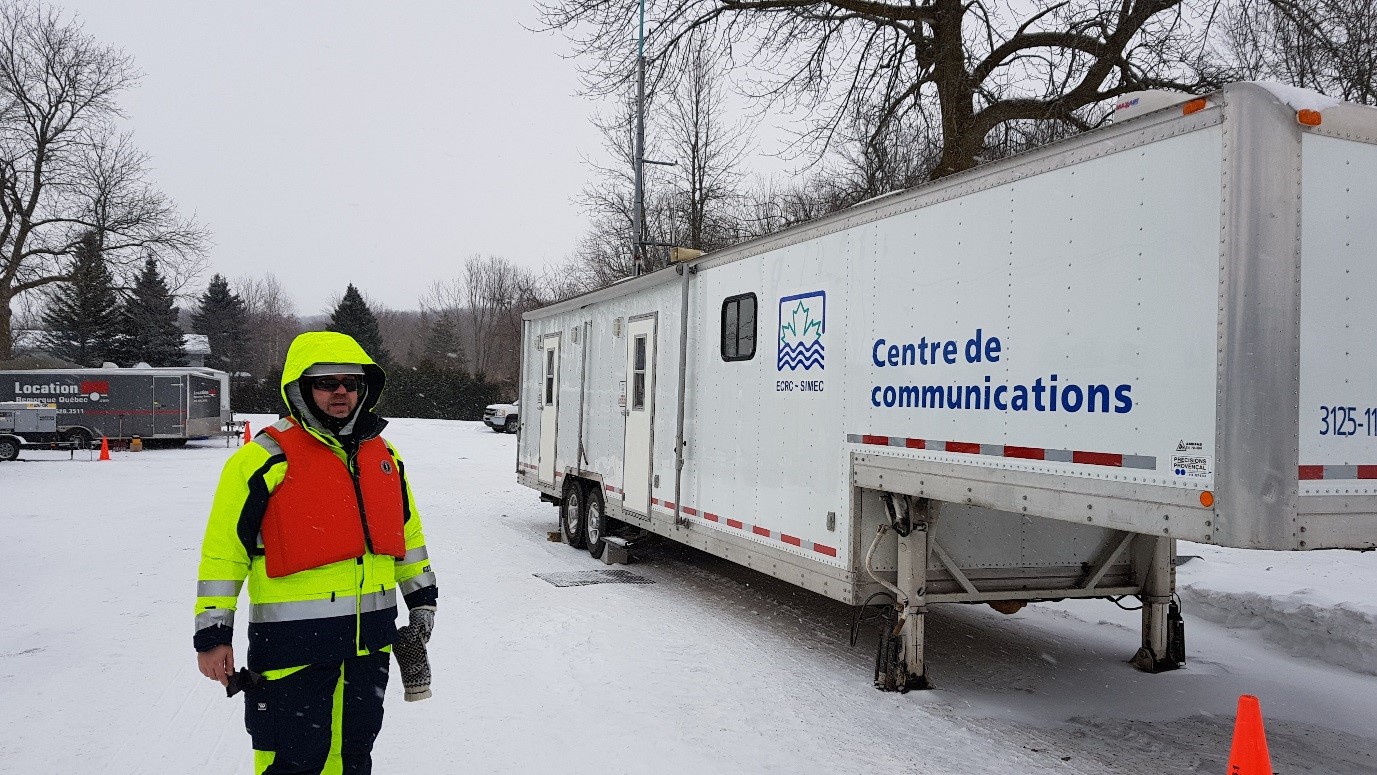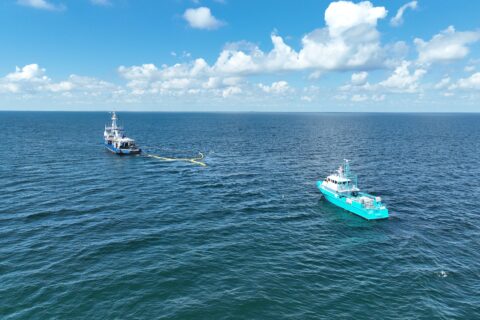The 2019 Global Response Network (GRN) Ice-covered Water Exercise, provided members of GRN the opportunity to engage in a “realistic” scenario involving several cold weather objectives. The exercise included multiple response strategies, logistics support and planning which resulted in a three-day exercise that allowed us to demonstrate and verify knowledge and training as well as cross-organisational communication.
GRN has an Executive Committee representing each of its members and Operational Teams made up of subject matter experts from all the members. These teams focus and exercise on key areas of an oil spill, one of which is ice-covered water response.
One important aim of this type of exercise is to work in a common operating picture. This means that regardless of layout on forms and procedures, we use similar terminology, similar data sets and work to a similar standard. These are all potential obstructions that might impact the efficiency of a response. One of the benefits that GRN has is the high-level remit. When approaching towards an “industry best practise” – this is as close to the “industry” as we get and therefore, we can change and improve the way we operate and maintain currency in our preparedness.
Held in Montreal, Canada, the exercise included members from Eastern Canada Response Corporation (ECRC ~ SIMEC), Oil Spill Response Limited (OSRL), an observer from Norwegian Clean Sea Association for Operating Companies (NOFO) and observers from Transport Canada. Participating in the role of the member company and incident owner were representatives from Enbridge, who operate the world’s longest crude oil and liquids transportation system in North America including Ontario and Quebec.
In Eastern Canada, the most likely spill scenario would be a train derailment or a pipeline spill. This type of scenario has also happened in the past, where ECRC ~ SIMEC have responded and thus being very experienced in this type of incident. Having Enbridge as part of the exercise provided a “realistic” scenario both in terms of geographical location and spill source. Although it is highly unlikely that an incident like this would occur with an industry focused on high-grade preventative maintenance and focus on HSEQ, preparedness is just as important to maintain and ensure readiness for any potential incident however unlikely it could be.
EXERCISE SCENARIO
Acting as the incident owner, the exercise was based on a pipeline incident from Enbridge as the source of the spill, and the response focused on several tactical response operations down-river from the incident site.
Exercise personnel were divided into three teams with team leaders from ECRC~SIMEC and the rest of the teams consisting of Enbridge and OSRL personnel. Two teams focused on response operations on the main river, while the last team responded to a small arm of the “Rivière du Nord” leading out to the main river. All three sites were due south of the “incident site”.
During the incident/exercise brief on day one, ECRC ~ SIMEC had already identified the different areas for the exercise, but for the benefit of all the new personnel on site not being familiar with the site(s) or this type of scenario, an in-depth explanation was given to show the basis for the selected areas. Detailed maps of the surrounding area were printed in large format and placed around the EOC. Using a thin plastic sheet overlaying the maps allowed for plans and routes to be drawn directly on top of the map.
A field operation centre was also established near the response site, this was utilised as a field command centre, support facilities and equipment lay-down area. The nearby site adjacent to the river provided easy access to equipment and reduced logistics operations transporting equipment needed for each response strategy. When responding in cold weather climates, we must consider human factors; being able to rotate in and out of site, access to warm-up areas, limit the equipment logistics to and from field base to incident site. All of which this type of field base will supply. This is also giving an indication of the scale of the logistics to an incident of this type.
SITE ACCESS AND SETUP
Before any work is done on the ice, a detailed profile needs to be established. The area also needs to be cleared from snow to maintain safe working conditions and ensure the ice is not insulated to improve the ice quality. Before accessing the ice, we ensure that we mitigate any potential risk associated with the planned activities. The required protective equipment consists of helmet with chinstraps, ice cleats and a life jacket. When performing the initial profiling and when there is a potential risk of falling into water, a travel restraint system with harness and rope is used. We also establish a tag-out board and all the team members are assigned with a number tag. Tag is worn in the ice and will ensure all personnel are accounted for should an emergency arise. We all take responsibility in checking each others well-being during a response. The temperatures throughout the exercise were in the -20 degrees Celsius range (-4 degrees Fahrenheit). In these conditions, a good “buddy check” system is necessary to check for signs of fatigue, frostbite or other signs of ill health.

Ice Profiling
Assessing the ice thickness is done by following a strict procedure of drilling a sequence of holes and measuring the thickness of blue (solid) ice and white (more porous ice). Results are recorded and communicated back to the Emergency Operating Centre (EOC) and form part of the ice profile data. This is used to calculate the work load limit on the ice.
The accumulated measurements from a specific area will assist planning and operations sections to determine what type of response/equipment would be suitable and provide an overall image of the site.
Work Area Delineation

Snow needs to be removed from the work area before the operation can start. A suitable work area for the selected response strategy is cleared of snow using snow blowers and manual shovel work. Removing the insulating layer of snow and exposing the ice will ensure that we maintain the ice thickness by allowing formation of clear, blue ice and expose any cracks or weak points in the ice. Daily changes in temperature causes ice to expand and contract, creating cracks and pressure ridges that can affect the ice strength.
The above steps were repeated at the start of each day, as new snow and temperature changes were frequent. A sample portion of new measurements in the area will give a good indication if something has changed overnight.

ECRC ~ SIMEC brought one Argo 8×8 all-terrain vehicle (ATV) to assist with mobilising equipment to and from the incident site. This proved very valuable to limit manual handling.
Snowmobiles could also have been used for this purpose, both transporting people and equipment to and from site. People will use energy quickly when moving heavy equipment through snow and across long distances.This has been included in the lessons identified and will be considered by OSRL for future training and exercises.
COLLECTION & RECOVERY
Teams 1 and 2 were tasked with creating a collection and recovery site on the main river where oil would be allowed to flow up through the ice and collected in an open pit. This response strategy consists of cutting out a “hockey stick” type formation in the ice, with a long trench running diagonally across a section of the river, with an open pit at the lower end. The pit needs to be large enough to facilitate a skimmer. The angle of the formation is done similar to calculating boom angles considering current direction and speed.

When marking out the “hockey stick”, one thing to consider is the width, as the ice blocks coming out will be removed by manual lifting.
One of the biggest hazards when cutting ice trenches or open pits is from manual chainsaw cutting and falling into open water. We used chainsaw sledges to minimise the need for manual cutting and minimise labour intensive tasks for long cuts.
Team 3 were split between two sites on the river arm (west) over the three days of the exercise and given two clear objectives for each. The first site, 3 km’s to the South of the main base of operations was designated as a deflection site.

Following the safe entry onto ice procedures, snow was cleared, and cuts made to deflect sub-ice oil to a collection area. The method of deflection was the use of plywood boards and the ECRC flowmeter was used to determine the location and deflection angles of each of the boards. The objective was to reduce the amount of oil reaching the main St Lawrence seaway, approx. 2 km further south. The second site was designated as a weir skimming collection area. A graded collection area was cut using an ice Auger at the base of a collection trench, which then had a movable weir system to allow the team to skim the oil from the top of the ice. This system proved very effective at reducing the amount of oil and ice debris that flowed into the collection pit, therefore ensuing the oil to ice ratio recovered by the peristaltic pump would be very high.
ROPE MOP SKIMMER DEMONSTRATION

The last site was prepared towards the end of the exercise. This was utilising some of the same techniques as before, but the trench and pit were kept dry and a rope mop skimmer placed into the trench.
The purpose of the demonstration was to install a circulating system that pumps water and creates pressure under the ice forcing the oil up and into the trench. The discharge tubing is angled at the end, and the depth can be adjusted to force the oil in the desired direction.

As shown in the image to the left, the ice blocks and snow can be used to isolate the area, building berms to contain the oil on surface and minimise further contamination. From a public perspective, it also creates a perimeter showing evidence of a work site. A river like “Rivière du Nord” has a lot of snowmobile traffic and is often accessed by the residents nearby.
Creating a perimeter with ice blocks and poles helps limit people accessing the work area. For the exercise, all open trenches and pits were filled with ice blocks before leaving the site and the ice could freeze up and close the holes.
SUMMARY
The exercise was a very good demonstration of the training and experience already established within the organisations. The goal for all of us is to improve our preparedness in responding to oil spills in ice-covered waters, cold weather conditions and often remote areas safely and efficiently. One of the ways this can be achieved is through working alongside other organisations, exercise these types of response scenarios and learn from each other. Challenges the teams faced during the exercise were raised as areas of improvement – recognising these areas, enables us to improve and be better prepared for an incident in similar conditions.
ECRC~SIMEC delivered a successful exercise, both in terms of planning, resources and facilities. One factor to this was the ongoing training that aims to standardise more of the response and therefore making the overall response more efficient. This all came together in the exercise and validates our training.




